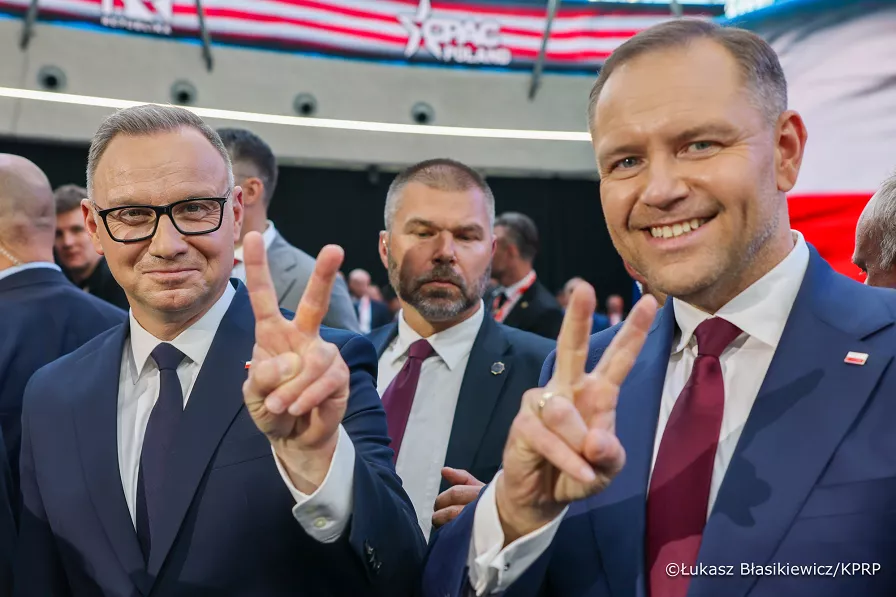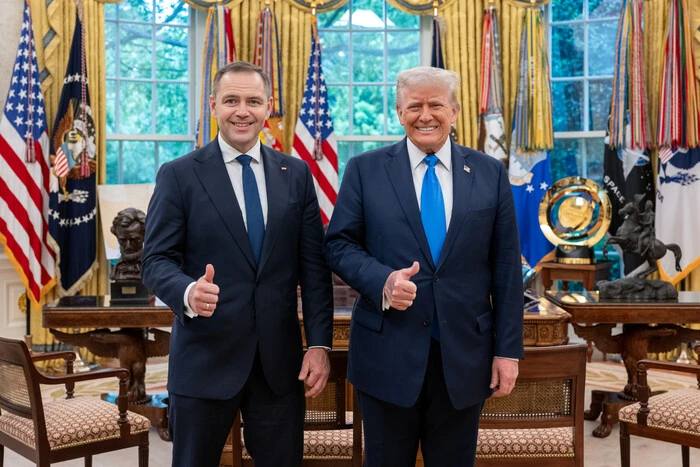Karol Nawrocki was elected President of Poland. During the campaign, he took a tougher stance on Ukraine, particularly regarding Euro-Atlantic integration and the politics of national memory. This raises a number of questions about the future of Polish-Ukrainian relations, which – despite a certain cooling – remain a key pillar of regional security.
We discussed these developments with Malwina Talik, political analyst and research associate at the Institute for the Danube Region and Central Europe (IDM).
Malwina, in your view, how could Karol Nawrocki’s presidency affect the dynamics of Polish-Ukrainian relations?
At this stage, we know very little about Karol Nawrocki as a politician. Until recently, he had not been part of Poland’s political front line. He led two important institutions in the field of national memory, but politics is a new arena for him.
During the campaign, however, Nawrocki made several statements that shed light on his approach to Polish-Ukrainian relations. He repeatedly opposed to Ukraine’s accession to NATO and the EU. Notably, this position contradicts the policies of both the current Polish government and the Law and Justice party that supported his candidacy. President Andrzej Duda has already expressed hope that Nawrocki will reconsider his stance on Ukraine’s membership in the EU and NATO.

Do you believe Nawrocki’s policy toward Ukraine might shift after taking office?
Nawrocki says that “at the moment” he does not support Ukraine’s accessions, which implies that his position may change. So I do believe that the newly elected president may adjust his approach to bilateral relations.
It seems Nawrocki wants Polish-Ukrainian relations to be more transactional. He has repeatedly mentioned what he sees as “unfair competition” from Ukraine and has criticized President Zelenskyy for what he described as “disrespect” toward Poland. Such remarks suggest that in the event of tensions, Nawrocki might lean toward a confrontational rather than diplomatic model.
At the same time, Nawrocki is a professional historian, and I have no doubt that memory politics and historical narratives will be among his key priorities. It is already clear that history will be a significant track in Polish-Ukrainian relations. For example, after receiving congratulations from President Zelenskyy on his victory, Nawrocki responded on X saying it was “important to resolve the issues of the past.” That was a direct signal of what he intends to focus on.
What steps should Ukraine take to establish effective communication with the new Polish president?
Ukraine needs a flexible strategy. Kyiv should observe and adapt.
Nawrocki appears to look up to “strongman” leaders – like Donald Trump. It’s also telling that his first interview with foreign media after the election was given to a Hungarian outlet aligned with Viktor Orbán’s government. This suggests a leaning toward the more illiberal political spectrum in Europe.
But that does not mean Ukraine should remain silent to avoid public frictions. On the contrary, it is crucial to establish direct and pragmatic dialogue as soon as possible, focusing on common interests such as security and energy. Ukraine should underscore that it appreciates Poland’s multifaceted support in the war against Russia, but should also clearly and diplomatically emphasize that it is a cornerstone of Poland’s security. This is precisely one of the reasons why previous Polish governments and presidents supported its path to NATO and the EU.
Another challenge is the issue of historical memory. It will clearly be high on Nawrocki’s agenda, and Kyiv must be prepared with a well-defined strategy – not only on how to engage with the Polish side, but also how to communicate these sensitive issues to Ukrainian society.
And finally, we should remember that it’s not just about the president. The current Polish government supports Ukraine’s EU and NATO membership. We should also not forget about Andrzej Duda – he will soon leave office, but he may still play an informal role as a mediator in bilateral relations.

What political and electoral trends did this campaign reveal?
First of all, far-right and nationalist parties were significantly underestimated. They received more than 20% of the vote after the first round, largely driven by young voters. If the second round had been decided only by younger voters, we would have seen two candidates from opposite extremes – the far right and the left.
Another factor was effective communication through social media. The radical candidates began campaigning early and made heavy use of YouTube, where long-format interviews with even lesser-known candidates were published. This gave voters a better chance to learn about each candidate’s positions.
A continuing issue is the existence of information bubbles. Many people consume news from only limited sources. For instance, Nawrocki’s supporters primarily watched TV Republika, a channel that broadcast highly favorable coverage of his campaign. This trend was noted by OSCE election observers as well.
Another serious problem is Russian disinformation. In Poland, it is difficult to promote openly pro-Russian messages, so the Kremlin’s strategy is not to glorify Russia—but to stir animosity toward Ukraine. Unfortunately, in some cases, this tactic may work. That’s why one of the key tasks for the Polish government is to actively counter these influences and protect the country’s information space.



